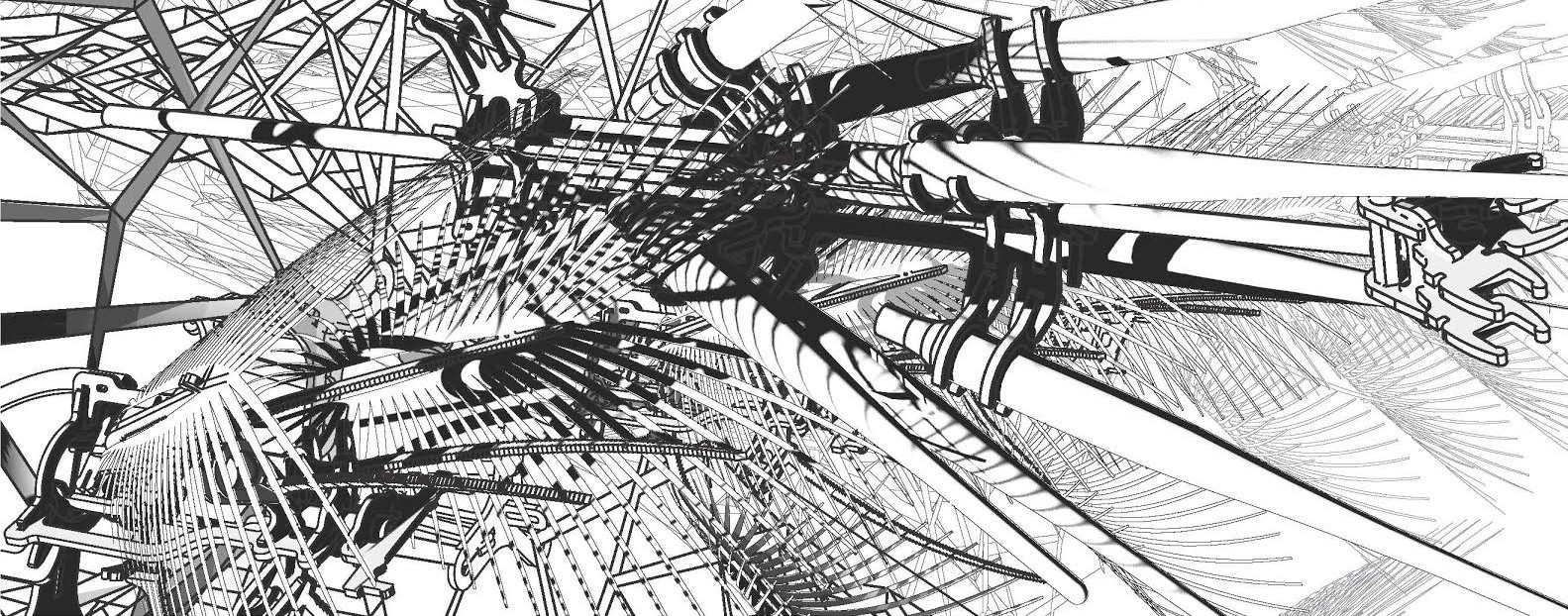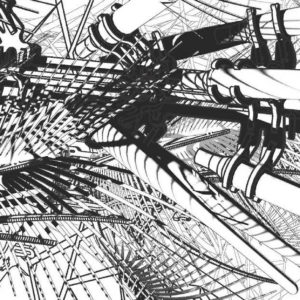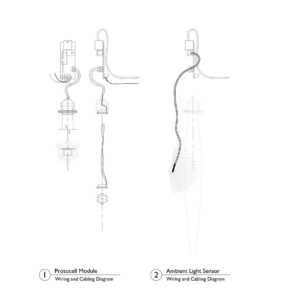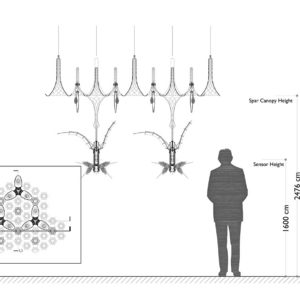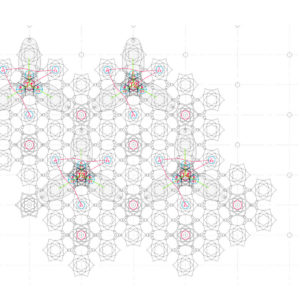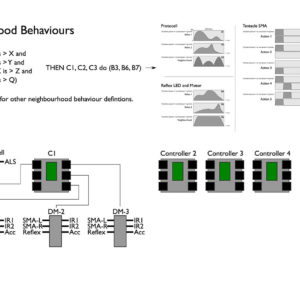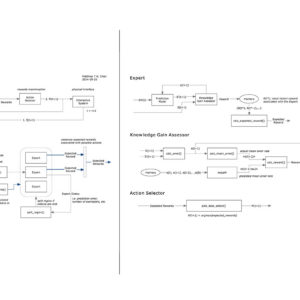Machine Learning for Interactive Systems
CITA, The Royal Danish Academy of Fine Arts
Copenhagen, DK 2016
The Machine Learning for Interactive Systems Workshop at CITA built from a preliminary workshop in October 2015 (Dissipative Architectures) that explored the design and fabrication of meshwork diffusive structures and distributed electronics, culminating in the installation of a flexible, responsive architectural canopy at CITA.
The canopy’s computational controls and proprioceptive functions support cycles of sensor and actuator data which enables it as a physical environment for machine learning. This was engaged directly as a test bed implementing The Living Architecture Systems Group’s ongoing work with curiosity based learning algorithms and the study of emergent behaviour.
Led by a team of researchers from the University of Waterloo/Living Architecture Systems Group, students engaged in:
- Exploring the interactive environment with pre-scripted behaviour, observing local and group behaviour of multiple interactive units;
- Implementing and studying a curiosity-based learning algorithm (CBLA) behaviour system and its relationship to prescripted behaviours.
- Implementing, exploring, and comparing other machine learning models (novelty searching vs objective based models).
- Enhancing the understanding of the machine learning algorithms through the development of dynamic visualizations allowing for recording, control, and simulation of the environment.
The workshop was a collaboration between CITA Studio and Extreme Environments masters program, and was held from February 13-15, 2016.
The Machine Learning for Interactive Systems Workshop follows the Complex Modelling Symposium hosted by CITA on February 12, 2016. This symposium brought together key researchers in the fields of architecture, evolutionary robotics, computer science, and artificial intelligence to explore the potentials of machine learning methods applied to architecture. For details on the Symposium please visit http://www.complexmodelling.dk/
Project Leads
- Philip Beesley
- Rob Gorbet
- Dana Kulić
- Paul Nicholas
PBAI Studio
- Matthew Chan
- Michael Formusa
- Mon Josef
- Salvador Miranda
- Thomas Noussis
- Clara Montgomery
- Anne Paxton
- Elisabeth Van Overbeeke
- Darcie Watson
CITA Studio
- David Garcia
- Ivan Heitmann
- Anders Ingvartsen
- Mette Ramsgaard Thomsen
- Ida Friis Tinning
- Mateusz Zwierzycki
